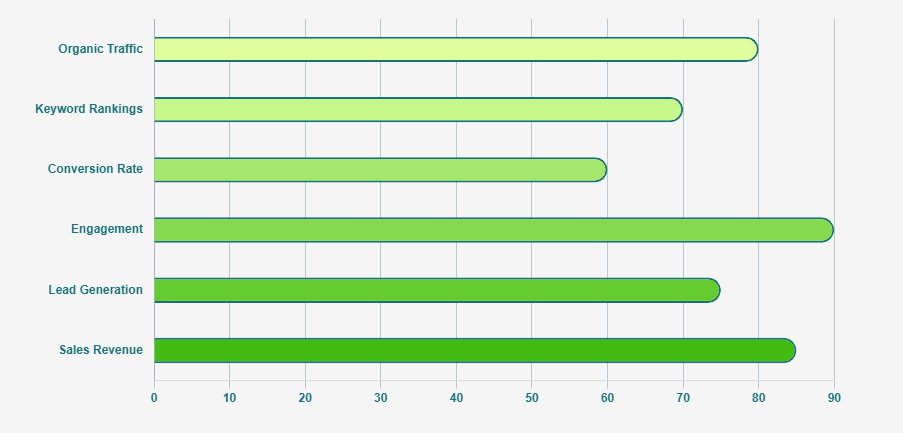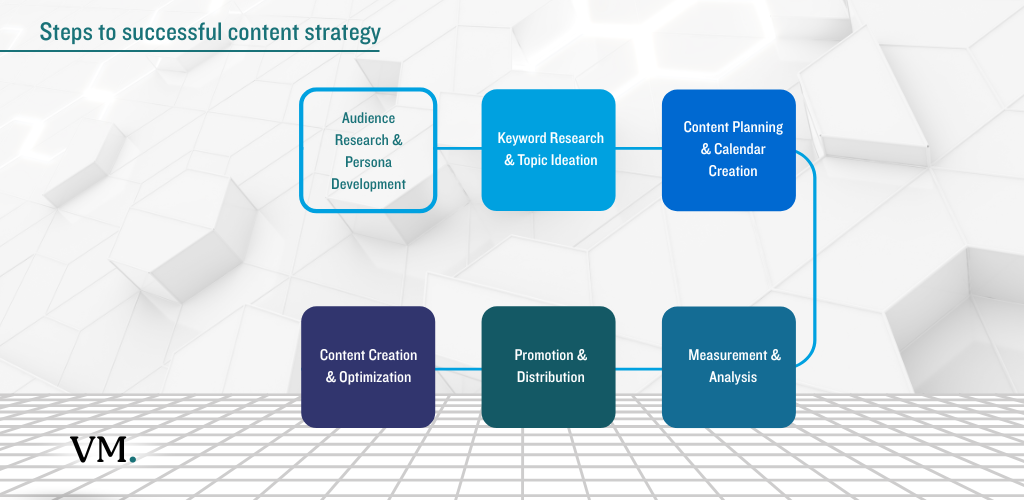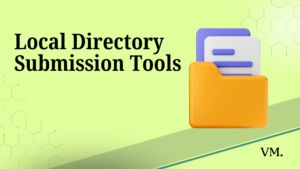Time to lay out the data-driven content strategy blueprint that worked for me- make it work for you.
Let’s face it. Content creation can feel like throwing spaghetti at the wall and hoping something sticks. You pour your heart and soul into crafting blog posts, videos, and social media updates, only to be met with crickets. Frustrating.
But, there’s a better way. A way to create content that actually works, generating real leads, driving sales, and building a loyal audience?
In this blog post, I’m going to share my step-by-step blueprint for creating a data-driven content strategy that delivers results. This isn’t just theory – it’s the exact process I’ve used to achieve those impressive sales figures.
Ready to ditch the spaghetti and start creating content that actually works? Let’s dive in.
Understanding the Foundation: Data-Driven Content Marketing
So, what exactly is data-driven content marketing? Simply put, it’s a content strategy that’s informed by data at every stage, from audience research to content creation to performance analysis.
Why is Data Crucial for Success?
- Reduces Risk: Instead of guessing what your audience wants, you use data to identify their pain points, interests, and search behavior.
- Improves Targeting: Data helps you create content that resonates with specific segments of your audience, increasing engagement and conversion rates.
- Optimizes ROI: By tracking key metrics, you can identify what’s working and what’s not, allowing you to continuously improve your content strategy and maximize your return on investment.
Key Metrics to Track:
- Organic Traffic: The number of visitors who find your website through search engines.
- Keyword Rankings: Your website’s position in search results for relevant keywords.
- Conversion Rates: The percentage of visitors who take a desired action, such as signing up for your email list or making a purchase.
- Engagement Metrics: Metrics like bounce rate, time on page, and social shares that indicate how engaged your audience is with your content.
- Lead Generation: The number of leads generated by your content.
- Sales Revenue: The revenue generated directly or indirectly by your content.
Without data, you’re flying blind. With data, you’re navigating with a GPS.
Step 1: Audience Research & Persona Development
Before you even think about creating content, you need to understand your audience. This goes way beyond basic demographics like age and location. You need to dig deep and uncover their pain points, goals, content preferences, and search behavior.
Tools for Audience Research:
- Google Analytics: A powerful tool for tracking website traffic, user behavior, and conversions.
- Social Media Analytics: Platforms like Facebook, Twitter, and LinkedIn provide insights into your audience’s demographics, interests, and engagement patterns.
- Surveys: Create surveys using tools like SurveyMonkey or Google Forms to gather direct feedback from your audience.
- Competitor Analysis: Analyze your competitors’ websites and social media profiles to identify what’s working for them and what’s not. Tools like SEMrush or Ahrefs can help you uncover their top-performing content and keywords.
- Customer Interviews: Talking directly to your customers can provide invaluable insights into their needs and motivations.

Creating Detailed Buyer Personas:
Next step in this content strategy blueprint is creating a buyers persona. A buyer persona is a semi-fictional representation of your ideal customer. It’s based on research and data about your existing and prospective customers. When creating your buyer personas, consider the following:
- Demographics: Age, gender, location, income, education, job title.
- Psychographics: Interests, values, lifestyle, personality.
- Pain Points: What challenges or frustrations are they facing?
- Goals: What are they trying to achieve?
- Content Preferences: What types of content do they prefer (e.g., blog posts, videos, infographics)? Where do they consume content (e.g., social media, industry blogs)?
- Search Behavior: What keywords are they using to find information related to your products or services?
Example Buyer Persona:
Name: Sarah, the Marketing Manager
Demographics: 35 years old, female, located in New York City, earns $80,000 per year, holds a bachelor’s degree in marketing.
Psychographics: Ambitious, data-driven, always looking for new ways to improve her marketing performance.
Pain Points: Struggling to generate enough leads for her sales team, feeling overwhelmed by the amount of data available, unsure how to create a content strategy that actually drives results.
Goals: To increase lead generation by 20% in the next quarter, to become a more data-driven marketer, to earn a promotion to marketing director.
Content Preferences: Prefers blog posts, case studies, and webinars that provide actionable insights and practical tips. Follows industry blogs like MarketingProfs and HubSpot.
Search Behavior: Searches for keywords like “lead generation strategies,” “data-driven marketing,” and “content marketing ROI.”
How to Use Data to Refine Your Understanding of Your Audience Over Time:
Your audience constantly evolves, so it’s important to continuously monitor your data and refine your buyer personas accordingly. Pay attention to changes in your website traffic, social media engagement, and customer feedback.
For example, if you notice that a particular blog post is generating a lot of traffic from a new demographic, you may want to create a new buyer persona to reflect this trend. Or, if you receive feedback from customers that they’re struggling with a particular aspect of your product or service, you can create content that addresses their concerns.
Step 2: Keyword Research & Topic Ideation
Once you have a deep understanding of your audience, it’s time to identify the keywords they’re using to find information related to your products or services.
Using Data to Identify High-Potential Keywords:
- Search Volume: The number of times a keyword is searched for each month.
- Keyword Difficulty: A measure of how difficult it is to rank for a particular keyword.
- Relevance: How relevant the keyword is to your business and your audience’s needs.
- Commercial Intent: The likelihood that someone searching for a particular keyword is ready to make a purchase.
Tools for Keyword Research:
- Google Keyword Planner: A free tool from Google that provides data on search volume, keyword difficulty, and related keywords.
- SEMrush: A comprehensive SEO tool that offers a wide range of features, including keyword research, competitor analysis, and site auditing. I personally use this extensively.
- Ahrefs: Another popular SEO tool that provides similar features to SEMrush.
- Moz Keyword Explorer: A keyword research tool that provides data on search volume, keyword difficulty, and organic click-through rate.
Long-Tail Keywords vs. Short-Tail Keywords:
- Short-Tail Keywords: Broad keywords with high search volume (e.g., “marketing,” “SEO”). These are generally more difficult to rank for.
- Long-Tail Keywords: More specific keywords with lower search volume (e.g., “how to create a data-driven content strategy,” “best SEO tools for small businesses”). These are generally easier to rank for and can attract a more qualified audience.
How to Generate Content Ideas Based on Keyword Research and Audience Needs:
- Identify Questions Your Audience Is Asking: Use tools like AnswerThePublic to find questions people are asking online related to your target keywords.
- Brainstorm Content Formats: Think about different ways you can present your content, such as blog posts, videos, infographics, podcasts, or webinars.
- Focus on Providing Value: Create content that is informative, engaging, and actionable.
Competitor Keyword Analysis: Identifying Opportunities and Gaps:
Analyze your competitors’ websites and social media profiles to identify the keywords they’re targeting and the content they’re creating. Look for opportunities to create better content or target keywords that your competitors are neglecting.
Step 3: Content Planning & Calendar Creation
Now that you know your audience and have a list of target keywords, it’s time to develop a content calendar. This will help you stay organized, consistent, and focused on your goals.
Developing a Content Calendar:
- Set Goals: What do you want to achieve with your content? (e.g., increase website traffic, generate leads, drive sales).
- Choose Content Formats: What types of content will you create? (e.g., blog posts, videos, infographics).
- Assign Keywords: Which keywords will you target with each piece of content?
- Set Publication Dates: When will you publish each piece of content?
- Assign Responsibilities: Who is responsible for creating, editing, and publishing each piece of content?
Different Content Formats:
- Blog Posts: A great way to share your expertise and attract organic traffic.
- Videos: Engaging and shareable, videos can be used to explain complex topics or showcase your products or services.
- Infographics: Visually appealing and easy to digest, infographics can be used to present data or summarize key information.
- Podcasts: A convenient way for your audience to consume your content on the go.
- Ebooks and Whitepapers: In-depth resources that can be used to generate leads.
How to Align Content with the Buyer’s Journey:
- Awareness Stage: Create content that introduces your audience to your brand and their pain points.
- Consideration Stage: Create content that helps your audience evaluate their options and learn more about your products or services.
- Decision Stage: Create content that helps your audience make a purchase decision.
Tools for Content Planning and Project Management:
- Trello: A visual project management tool that can be used to organize your content calendar and track your progress.
- Asana: Another popular project management tool that offers similar features to Trello.
- Google Calendar: A simple and free tool that can be used to schedule your content and set reminders.
- CoSchedule: A content marketing calendar and project management tool designed specifically for marketers.

Step 4: Content Creation & Optimization
This is where the rubber meets the road. It’s time to create high-quality, engaging content that your audience will love.
Best Practices for Writing Engaging, High-Quality Content:
- Write for Your Audience: Use a tone and style that resonates with your target audience.
- Focus on Providing Value: Create content that is informative, actionable, and entertaining.
- Use Clear and Concise Language: Avoid jargon and technical terms that your audience may not understand.
- Break Up Your Content: Use headings, subheadings, bullet points, and images to make your content easier to read.
- Tell a Story: Use storytelling to engage your audience and make your content more memorable.
On-Page SEO Optimization:
- Title Tags: Create compelling title tags that accurately reflect the content of your page and include your target keywords.
- Meta Descriptions: Write concise meta descriptions that summarize the content of your page and encourage users to click through from search results.
- Header Tags: Use header tags (H1, H2, H3, etc.) to structure your content and highlight key points.
- Internal Linking: Link to other relevant pages on your website to improve your site’s navigation and SEO.
- Image Optimization: Optimize your images by using descriptive file names and alt tags.
How to Optimize Content for Readability and User Experience:
- Use Short Paragraphs: Keep your paragraphs short and to the point.
- Use White Space: Use plenty of white space to make your content easier to read.
- Use Visuals: Include images, videos, and other visuals to break up your text and make your content more engaging.
- Use a Readable Font: Choose a font that is easy to read on both desktop and mobile devices.
Using Data to Improve Content Over Time:
- A/B Testing Headlines: Test different headlines to see which ones generate the most clicks.
- A/B Testing Calls to Action: Test different calls to action to see which ones generate the most conversions.
- Analyzing User Behavior: Use tools like Google Analytics to track how users are interacting with your content and identify areas for improvement.
Step 5: Promotion & Distribution
Creating great content is only half the battle. You also need to promote your content to reach your target audience.
Promoting Content Through Social Media:
- Share Your Content on Relevant Platforms: Share your content on the social media platforms where your target audience is most active.
- Use Engaging Headlines and Visuals: Capture your audience’s attention with compelling headlines and visuals.
- Engage with Your Audience: Respond to comments and questions, and participate in relevant conversations.
Promoting Content Through Email Marketing:
- Send Targeted Emails: Segment your email list and send targeted emails to subscribers who are most likely to be interested in your content.
- Use Compelling Subject Lines: Write subject lines that encourage your subscribers to open your emails.
- Include a Clear Call to Action: Tell your subscribers what you want them to do (e.g., read your blog post, download your ebook).
Link Building Strategies:
- Internal Linking: Link to other relevant pages on your website.
- Guest Blogging: Write guest posts for other websites in your industry and include links back to your own website.
- Broken Link Building: Find broken links on other websites and offer to replace them with links to your own content.
Leveraging Influencer Marketing:
- Identify Influencers in Your Niche: Find influencers who have a large and engaged following in your target niche.
- Reach Out to Influencers: Contact influencers and ask them to share your content with their audience.
- Offer Incentives: Offer influencers incentives, such as free products or services, to encourage them to promote your content.
Repurposing Content:
- Turn a Blog Post into a Video: Create a video based on a popular blog post.
- Turn a Webinar into a Series of Blog Posts: Break down a webinar into a series of blog posts.
- Turn a Case Study into an Infographic: Create an infographic that summarizes the key findings from a case study.
Step 6: Measurement & Analysis
The final step in the data-driven content strategy blueprint is to measure your results and analyze your data. This will help you identify what’s working and what’s not, so you can continuously improve your content strategy.
Tracking Key Metrics:
- Website Traffic: Track the number of visitors to your website, as well as their source (e.g., organic search, social media, email marketing).
- Keyword Rankings: Track your website’s position in search results for your target keywords.
- Engagement Metrics: Track metrics like bounce rate, time on page, and social shares.
- Lead Generation: Track the number of leads generated by your content.
- Sales Revenue: Track the revenue generated directly or indirectly by your content.
Using Google Analytics and Other Tools:
- Google Analytics: A powerful tool for tracking website traffic, user behavior, and conversions.
- SEMrush/Ahrefs: SEO tools that provide data on keyword rankings, backlinks, and competitor analysis.
- Social Media Analytics: Platforms like Facebook, Twitter, and LinkedIn provide insights into your audience’s demographics, interests, and engagement patterns.
Identifying Areas for Improvement and Optimization:
- Analyze Your Data: Look for trends and patterns in your data to identify what’s working and what’s not.
- Identify Underperforming Content: Identify content that is not generating traffic, leads, or sales.
- Experiment with Different Strategies: Test different headlines, calls to action, and content formats to see what works best.
Creating Reports:
- Communicate Your Results: Share your findings with stakeholders, such as your boss, your team, or your clients.
- Use Visuals: Use charts and graphs to present your data in a clear and concise way.
- Provide Actionable Recommendations: Suggest specific steps that can be taken to improve your content strategy.
Wrapping It Up
Creating a successful content strategy in today’s crowded digital landscape can feel overwhelming. But by embracing a data-driven approach, you can cut through the noise and create content that truly resonates with your audience, drives real results, and, as I’ve proven, can lead to millions in sales.
Remember these key steps:
- Understand Your Audience: Dig deep to uncover their pain points, goals, and content preferences.
- Identify High-Potential Keywords: Use data to find the keywords your audience is searching for.
- Create a Content Calendar: Plan your content in advance to stay organized and consistent.
- Create High-Quality Content: Focus on providing value and engaging your audience.
- Promote and Distribute Your Content: Reach your target audience through social media, email marketing, and other channels.
- Measure and Analyze Your Results: Continuously track your data and refine your strategy.
Now it’s your turn. Take these strategies, implement them in your own business, and start seeing the results for yourself.
FAQ
Data-driven content marketing involves using data to guide the creation, distribution, and optimization of content1. By analyzing metrics such as audience demographics, engagement rates, and conversion rates, marketers can make informed decisions that enhance content relevance and effectiveness1. This approach ensures content meets audience needs and expectations
A data-driven content strategy helps tailor content precisely to audience needs, leading to higher engagement and improved results1. Businesses using data-driven content marketing are more likely to achieve their goals, with a significant increase in ROI1. It refines the content creation process and optimizes resource allocation, ensuring content resonates with the target audience and garners quality leads
Data can be collected from various sources, including website analytics, social media insights, CRM systems, and customer feedback. Tools like Google Analytics and social media platform analytics provide valuable data on audience behavior and preferences.
Key data types to analyze include audience demographics, behavior, and preferences. Metrics like page views, time on page, and social shares can reveal which topics and formats are most appealing. Also consider search volume, keyword difficulty, relevance, and commercial intent for keyword selection.
Tools like Google Analytics, SEMrush, and Ahrefs play a crucial role in gathering and analyzing data. These tools help marketers understand audience preferences and behavior, identify content gaps, and track performance effectively.
Creating a data-driven content strategy involves setting clear goals and KPIs, collecting relevant data, analyzing the data, planning and creating content based on the analysis, and then measuring and adjusting your strategy based on performance. Regularly monitor the performance of your content using the KPIs you’ve set.
Potential goals for your tech content include educating your audience about your products and services, creating demand for your products, building trust with your audience by sharing quality thought leadership content, and encouraging a specific response like requesting a demo or asking for more information.
Include a detailed plan for ensuring your content lands in front of the right audience. Data will show you which platforms and channels your audience is most likely to respond to. Consumer insights will show you when your primary decision-makers are most active.
Regularly monitor the performance of your content using the KPIs you’ve set. Evaluate what’s working and what’s not, and be prepared to adjust your strategy accordingly. Continuous optimization based on data ensures your data-driven content strategy remains effective and relevant.
Continuously analyze data to stay ahead of trends and adapt your strategies to meet evolving audience needs. Regular monitoring and adjustments are essential to maintain the effectiveness and relevance of your content strategy.



